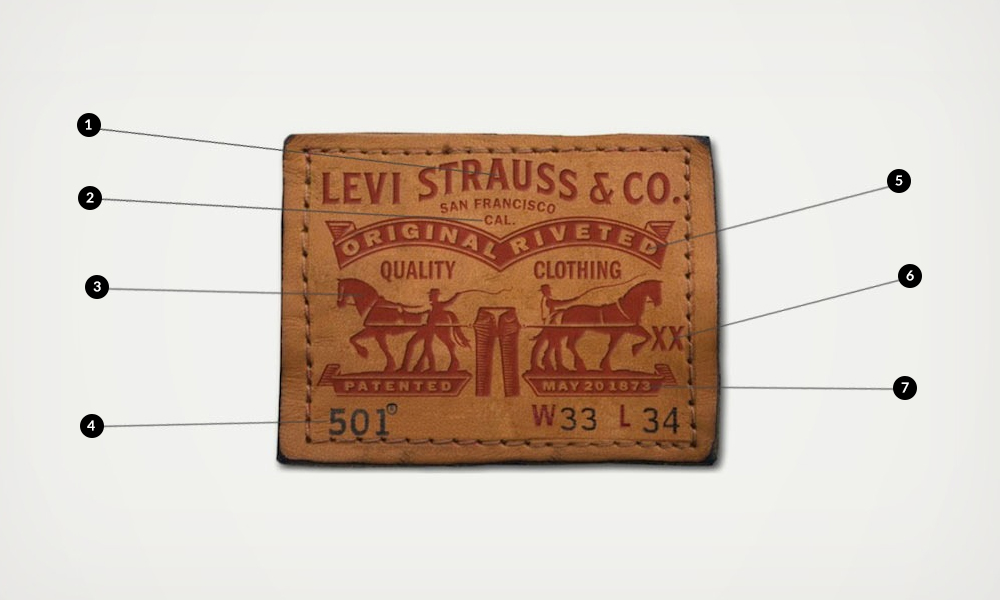Have you ever looked at the back of your Levi’s? Outside of checking the size when you were purchasing them, you probably haven’t studied the backside of your jeans. The iconic denim company has a fairly famous patch on there that shares a few clues about the company’s history. Here’s what everything on the Two Horse Patch means.
- 1. Levi Strauss & Co.: Levi Strauss was born in Germany in 1829 and moved to the United States with his family when he was 18. His brothers ran a dry goods company in New York and Levi and his other family members set up an outpost in San Francisco during the gold rush. Levi would eventually team up with William Price to start his own business called Levi Strauss & Co.
- 2. San Francisco, Cal.:The original address for Levi Strauss & Co. was 62 Sacramento Street, San Francisco, CA.
- 3. Two Horses: With the patent for riveted jeans set to expire in 1890, the company came up with the idea of using a simple image to convey the toughness of the pants. The two horses trying in vain to rip the jeans would become a trademark of the company and appear on patches since its inception. Strauss and others believed it was also a good way to stress the durability to customers who didn’t know English.
- 4. 501: In 1890, with the patent expiring, lot numbers were assigned to the different garments from Levi’s. 501 was the lot number given to the original XX. The reason the number was chosen is unknown as many of the records were destroyed in the 1906 San Francisco earthquake. We do know that items that started with a “5” were the top-of-the-line.
- 5. Original Riveted: Jacob Davis was a tailor from Nevada who came up with the idea of using copper rivets to secure pockets and reinforce areas of stress on a pair of pants to make them more durable. In 1873, he worked with Levi Strauss to patent the idea and begin making work pants for miners out of brown cotton duck and blue denim featuring these rivets.
- 6. XX: Originally used to designate the highest quality denim from the Amoskeag Mill in Manchester, New Hampshire. Strauss obtained his denim from the mill and used it in creating the first pair of blue jeans. In turn, they were known as the XX.
- 7. Patented May 20, 1873 : Date Strauss and Davis received their patent.




